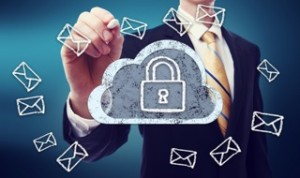Two-step authentication, or two-factor authentication (2FA for short) as it’s typically referred to in the world of cyber-security, can add an additional layer of protection (and an extra layer of work) to your email. 
If you’re not using 2FA, you are typically entering only your username and password each time you want to gain access to your email. It’s also possible you’re using even less than that if you’re using applications on your phone or other device that maintains your username and password.
The second factor – the 2 in 2FA – is what adds a layer of protection to make your account more secure. Does it make your account impenetrable? No. As you should know by now, there is no completely secure email system. However, two-step-authentication makes your account less likely to be hacked or attacked by someone seeking to gain access.
What is the Second Factor in Two-factor Authentication for Email?
The second-factor in two-factor verification boils down to one of three things:
- Something you know.
- Something you have.
- Something you are.
Let’s take a look at each:
Something you know. Two-factor authentication for email can involve something you know – such as a PIN, pattern or password. Chances are you already do this with some websites such as financial websites. If it isn’t obvious, these PINs, patterns and passwords are things you should be keeping secret.
Something you have. You probably already do this if you shop online and use a credit or debit card. During checkout, you’re almost always asked for the security code that is on the front or back of your card (depending on the issuing institution). For email, this could mean a code that you are sent via text each time you log in, or a FOB that gives you a unique code each time you enter your username and password.
Something you are. Right now, biometrics as a second-factor for email logins are not common. But as technology progresses, they could be part of this additional layer of email security. Fingerprints, voice recognition or even your voice, could be used as a factor for email authentication.
Using two steps in authentication is nothing new. When you buy gas from a station outside of a certain radius from your home, you may be asked for your billing ZIP code as a way to ensure it’s really you who is using the card – that’s two-step authentication. The card is the first step, the ZIP code, the second.
Why Aren’t More People Using Two-Step Authentication for Email
2FA is an important step in email security – yet many people are still not using it. One of the major reasons that that it adds a layer of work to accessing something we see as ubiquitous, and that extra step seems like a disproportionately large step.
Most companies that require or have offered two-step authentication for their users have made it about as easy as they can. Gmail sends you a text message with a six-digit code every time you log in. Sure, you have to get the message, remember the code, and type it before you log-in, but this minor inconvenience is still too much for some people.
If you’re serious about your email security and need a higher-level of protection over your personal information (think of all the personal data lurking in your emails) then you need two-factor authentication for your email. Contact us today for more details about 2FA and how it can be implemented to make your company’s emails more secure from hackers.
